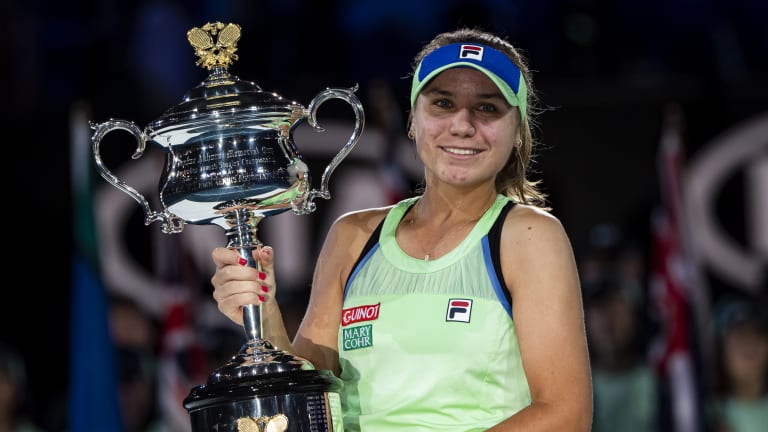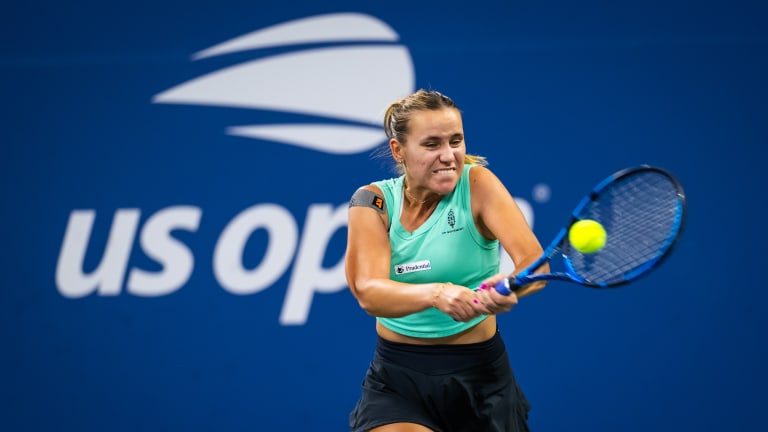Your Game
TECH Talk: Sofia Kenin is back(hand) and making moves in San Diego
By Sep 14, 2023Your Game
Tariffs are serving up challenges to the tennis equipment industry
By Apr 13, 2025Your Game
The Partner ball machine uses robotics to revolutionize tennis training
By Apr 12, 2025Your Game
Racquet Review: Wilson Clash 100 Pro v3
By Apr 06, 2025Your Game
Shoe Review: Adidas Ubersonic 5
By Apr 05, 2025Your Game
Doubles Partners: Asics and A.P.C. team up for one-of-a-kind tennis collection
By Mar 30, 2025Your Game
Babolat and Lamborghini collaborate on new padel racquet collection
By Mar 29, 2025Your Game
Madison Keys: how racquet change led to first Grand Slam title
By Mar 28, 2025Your Game
Geared Up: Grigor Dimitrov continues to be a force with Wilson, Lacoste and Adidas
By Mar 23, 2025Your Game
Racquet Review: Babolat Pure Drive
By Mar 22, 2025Your Game
TECH Talk: Sofia Kenin is back(hand) and making moves in San Diego
Kenin has taken out No. 6 seed Veronika Kudermetova, fellow American Katie Volynets, and Anastasia Potapova to secure a spot in the semifinals.
Published Sep 14, 2023
Advertising

At 22 years old, Sofia Kenin became the youngest American player since Serena Williams to win a grand slam.
© © TENNIS PHOTO NETWORK
Advertising

Shot placement makes or breaks a tennis player.
© 2023 Robert Prange